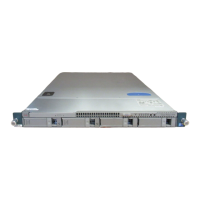3-14
Cisco Nexus 1000V Troubleshooting Guide, Release 5.2(1)SV3(1.1)
OL-31593-01
Chapter 3 Installation
Problems with the Cisco Nexus 1000V Installation Management Center
Problems with the Cisco Nexus 1000V Installation Management
Center
The following are possible problems and their solutions.
.
Symptom Problem Recommended Action
Port migration fails. The VSM to VEM migration fails in
Layer 2 / Layer 3 mode installation.
• Check if there is any VM running on the
vSwitch. You need to power off all VMs
running on the vSwitch before migration.
• Check if the vCenter is Virtual Update Manager
(VUM) enabled. Before migration, the host is
added to the DVS by using VUM.
• Verify that the native VLAN in the upstream
switch configuration is correct.
• Ensure that the VUM repositories are
up-to-date and accurate.
The VEM is missing on the
VSM after the migration.
• The installer application finishes
successfully with port migration in
Layer 3 mode.
• The VEM is added to the vCenter
but does not display when the show
module command is entered on the
VSM.
• Verify that the Layer 3 control profile VLAN is
configured as a system VLAN.
• Verify that the uplink profile is allowing the
Layer 3 control VTEP VLAN and that it is a
system VLAN.
• From the ESX host (VEM), enter a vmkping to
the mgmt0/control0 IP address. It should be
successful. If not, check the intermediate
switches for proper routes between the subnets.
• The VTEP should be pingable from the VSM.
• Check the vCenter MOB for opaque data
propagation.
Configuration file issue. After loading the previously saved
configuration file, the installation
application does not complete.
• Check the configuration file for appropriate
contents.
Note You might need to change a few of the fields
before reusing the previously saved files.
• Check if a VM with the same name already
exists in the DC.
This can be identified by reviewing the Virtual
Machine field in the configuration file.

